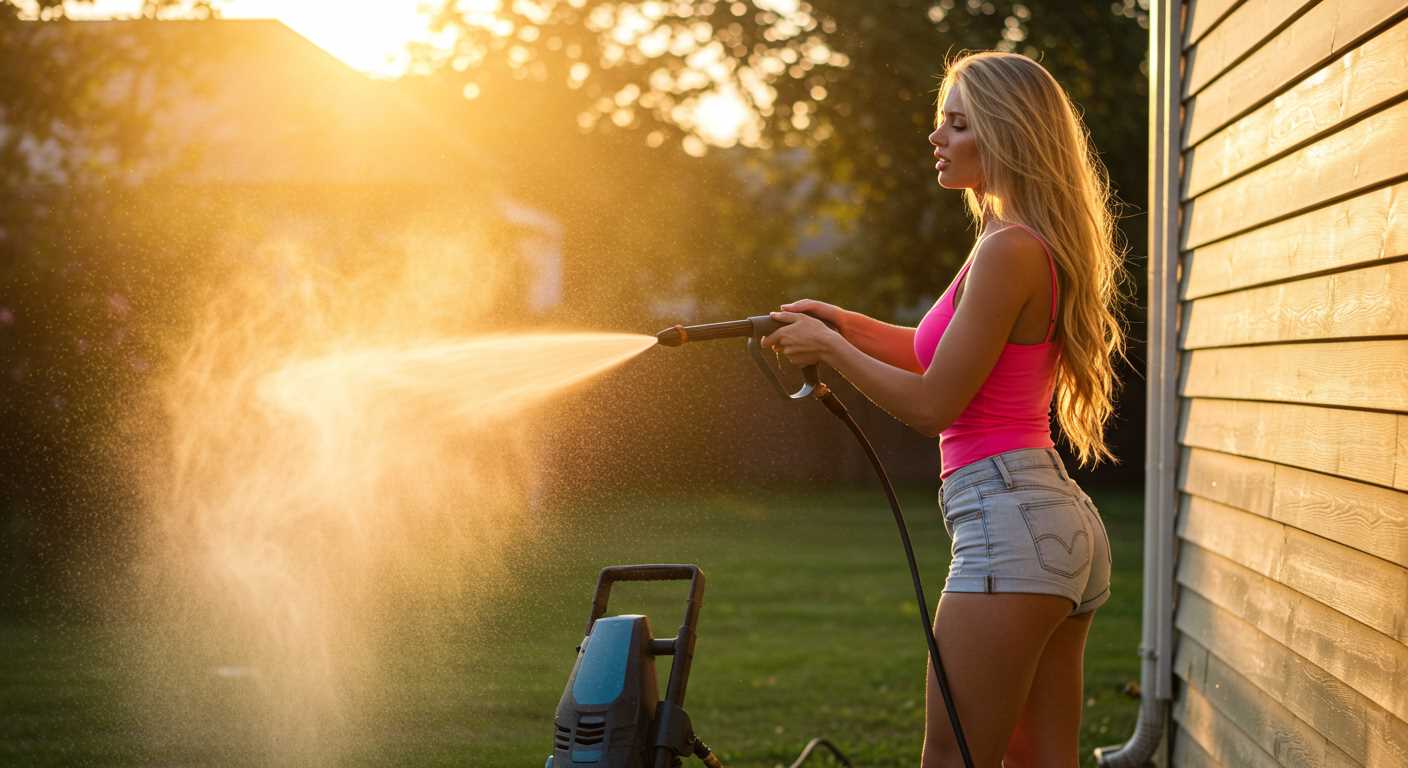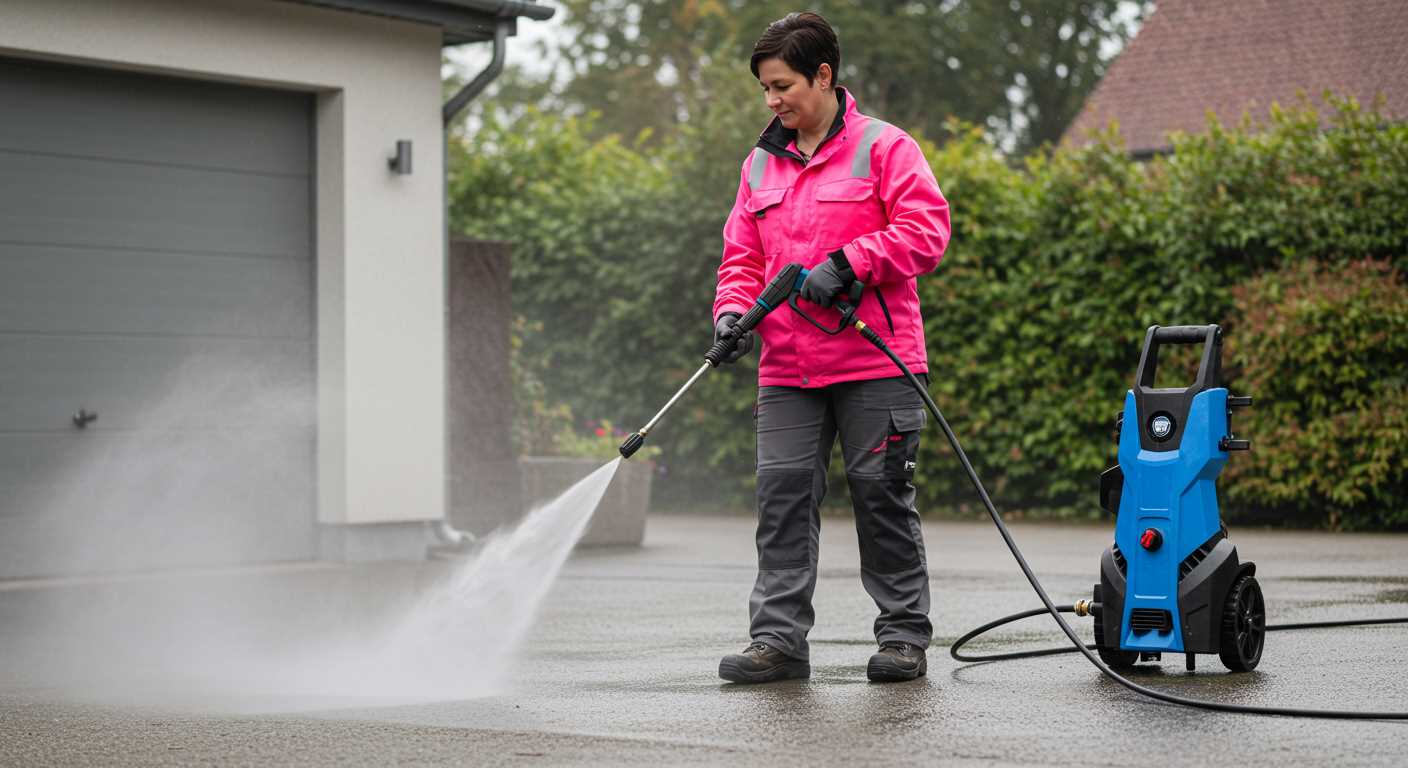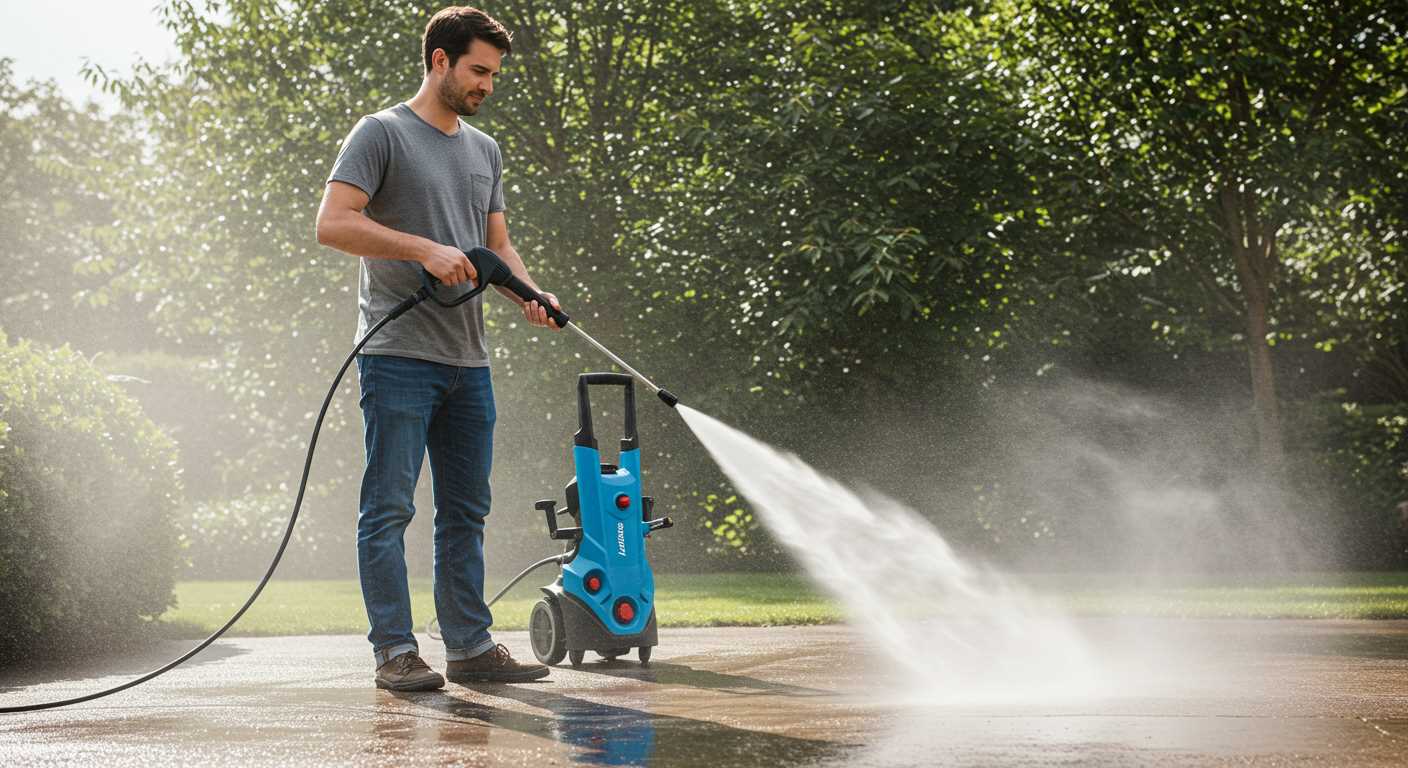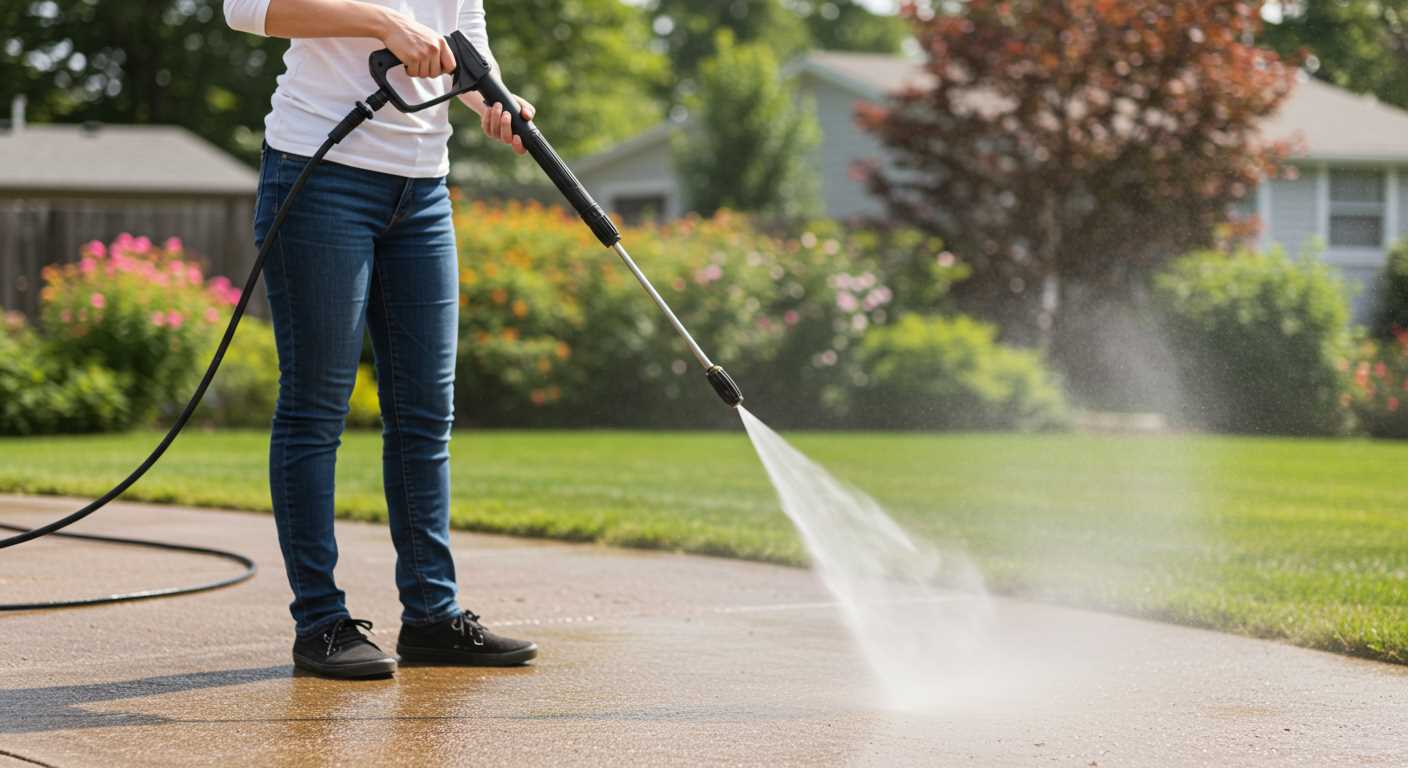



Using high-pressure equipment on photovoltaic surfaces is generally inadvisable. The intense force can cause irreversible damage to the delicate glass and the underlying components. It’s crucial to approach the maintenance of these systems with caution.
I recommend opting for a gentle cleaning method, such as a soft brush combined with mild soapy water. This method effectively removes dirt and debris without risking harm to the array. Keeping the equipment at a safe distance ensures that the integrity of the system remains intact.
Should stubborn residues remain, consider employing a dedicated cleaning solution specifically designed for photovoltaic surfaces. Applying this liquid with a soft cloth can provide a safe alternative to harsh methods. A thorough inspection post-cleaning is wise to confirm that no water has seeped into sensitive areas.
Regular maintenance, ideally twice a year, enhances performance significantly. By adhering to these recommendations, one can ensure longevity and efficiency in energy production without the risk of costly repairs.
Considerations for High-Pressure Equipment on Photovoltaic Systems
Utilising high-pressure equipment on photovoltaics is not advisable. The force generated can damage protective coatings, leading to decreased output and potential long-term issues. Instead, opt for softer methods that preserve the integrity of the setup. Mild detergents and soft brushes should be your first choices, ensuring all components remain safe.
Risk Assessment

Evaluating potential risks is critical before engaging with any cleaning method on these installations. The following table outlines common concerns associated with high-pressure cleaning practices:
| Risk Factor | Description | Impact Level |
|---|---|---|
| Coating Damage | High-pressure streams may strip protective surfaces. | High |
| Water Infiltration | Forceful jets can lead to unintended water entry in fittings. | Medium |
| Physical Damage | Unintentional impacts can crack or shatter panels. | High |
| Operational Safety | Risk of slips and falls due to water runoff. | Medium |
Best Practices for Maintenance
Regular inspection and gentle cleaning are preferred. Employ a soft brush with soapy water for regular upkeep. Make sure to rinse thoroughly with low-pressure water to avoid residue build-up. Adhering to these recommendations ensures effective maintenance while preserving the life and functionality of the photovoltaic arrangement.
Understanding Cleaning Requirements
Regular maintenance is critical for the longevity and efficiency of energy conversion devices. An appropriate approach is essential to ensure optimal performance without causing damage. I recommend conducting routine inspections and adopting a gentle approach for any upkeep.
Key Factors to Consider

- Manufacturer Guidelines: Always refer to the manufacturer’s instructions regarding maintenance. Specific recommendations often include preferred cleaning solutions and methods.
- Soil Type: Different environmental factors can influence accumulation on the surface. Dry dust, bird droppings, and organic matter may require varied removal techniques.
- Frequency of Maintenance: Establish a cleaning schedule based on local conditions. Areas with heavy pollen or dust may necessitate more frequent attention than others.
- Time of Day: It’s best to perform maintenance during cooler periods to avoid streaking. Direct sunlight can cause cleaning solutions to dry too quickly, leading to residue.
Recommended Tools
- Soft Brushes: Use long-handled soft-bristled brushes to gently remove debris. This minimizes the risk of scratching.
- Low-pressure Water: Apply water gently to dislodge soil without compromising the integrity of the surfaces.
- Non-abrasive Cleaners: Select pH-neutral and biodegradable cleaners that are safe for sensitive materials.
Prioritising these aspects will ensure that upkeep remains effective while safeguarding the longevity of energy conversion systems. Adopting a mindful routine will yield significant benefits in performance and operational efficiency.
Suitable Pressure Settings for Solar Panels
The optimal pressure for maintaining the efficiency and integrity of your photovoltaic systems ranges from 1000 to 1500 PSI. This low to moderate setting effectively removes dirt and debris without risking damage to the delicate glass surface.
Adjusting Nozzle Types
Selecting the right nozzle is equally crucial. A wide fan nozzle, typically 25 to 40 degrees, disperses water uniformly and minimizes impact, ensuring safe cleaning. Avoid using narrow nozzles as they concentrate the force and could potentially scratch the surface.
Temperature Considerations

For enhanced results, warm water can be employed within a temperature cap of 60 degrees Celsius. This aids in breaking down stubborn grime without the need for excessive force, thus preserving the panels’ condition.
Risks Involved with Pressure Washing Solar Panels
Direct application of high-pressure water on photovoltaic systems poses significant hazards. Primarily, the force can easily damage the delicate surface of these energy collectors, leading to cracks or delamination.
Potential Damage
- Surface Integrity: The laminated layers may be compromised, which could affect efficiency.
- Seal Compromise: Ingress of water into junction boxes may cause electrical malfunctions.
- Electrical Hazards: Water exposure can create short circuits, posing safety risks.
Warranty Concerns
Utilising powerful washing methods might contravene manufacturer policies, nullifying warranties. Many companies explicitly state that improper maintenance techniques will void any claims.
Moreover, cleaning systems on sloped roofs increases the risk of slips and falls, necessitating fall protection measures. When deciding on maintenance practices, weighing these risks against the potential benefits is essential to ensure both safety and the integrity of the energy generation system.
Alternative Cleaning Methods for Solar Panels

For effective maintenance, manual washing with soft brushes and non-abrasive soaps is preferable. A gentle touch reduces the risk of damage while effectively removing dirt and debris. Always use a soft bristle brush to avoid scratching the surface.
Microfiber cloths are excellent for spot cleaning. They lift grime without scratching, making them ideal for maintenance of solar surfaces. Use these for small sections to maintain high efficiency, especially after rain.
Consider using a garden hose fitted with a spray nozzle. A simple rinse can remove light dust and contaminants. Position the nozzle at an angle to avoid splashing water into the electrical components.
Specialty cleaning solutions are available, designed specifically for photovoltaic modules. These products often contain biodegradable ingredients and are safe for both the environment and the panels. Always follow the manufacturer’s instructions for the best results.
For large-scale installations, hiring professional services is advisable. Experts possess the right equipment and knowledge to handle potential hazards while ensuring thorough maintenance.
Lastly, regularly scheduled maintenance checks can help identify issues early, ensuring optimal performance over time. Keeping panels free from obstructions is crucial for maximum energy absorption.
Proper Technique for Pressure Washing Solar Panels
Before starting, ensure to disconnect any electrical components linked to the modules to prevent hazards. Choose an angle of around 30 degrees to maintain optimal water flow while avoiding direct force on the surface, which may cause damage.
Utilize a fan nozzle as it distributes the water evenly, reducing the intensity of impact. Select a water temperature around 60°C, as hot water aids in dissolving grime without being abrasive. Maintain a distance of at least 1.5 meters between the nozzle and the surface for gentle cleansing.
Sequential Approach
Begin by rinsing the surface lightly, removing loose debris before applying any cleaning solution. For stubborn stains, use a biodegradable soap specifically formulated for this kind of equipment. Apply it using a soft brush or cloth to avoid scratching.
Rinse thoroughly with clean water post-application, ensuring all soap residues are eliminated. Check for any leftover spots or streaks and repeat the rinsing if necessary to achieve a clear finish.
Final Steps
After rinsing, inspect the units for any visible damage or wear, and allow them to dry naturally. Regular upkeep enhances performance, so establish a routine cleaning schedule, ideally during cooler times of the day to prevent rapid evaporation and streaking.
Frequency of Cleaning Solar Modules with a Pressure Jet

Optimal maintenance involves inspecting and refreshing installations bi-annually, ideally during spring and autumn. This schedule accommodates varying weather conditions and minimizes dirt accumulation. Regions with high dust, pollen, or bird activity may require more frequent attention, reaching up to quarterly refreshes.
Environmental Factors
Proximity to trees or agricultural zones contributes significantly to the frequency of required maintenance. Both foliage and farming activities can increase debris levels on surfaces, demanding more regular washing sessions to maintain efficiency.
Performance Monitoring
Routine performance assessments offer a clear indication of whether more frequent purges are necessary. If energy output declines noticeably, it might be time to increase washing intervals. Regular checks ensure optimal functionality and energy production.
Establishing a tailored cleaning routine based on specific local conditions and performance data ensures maximum energy capture and longevity of the system.








